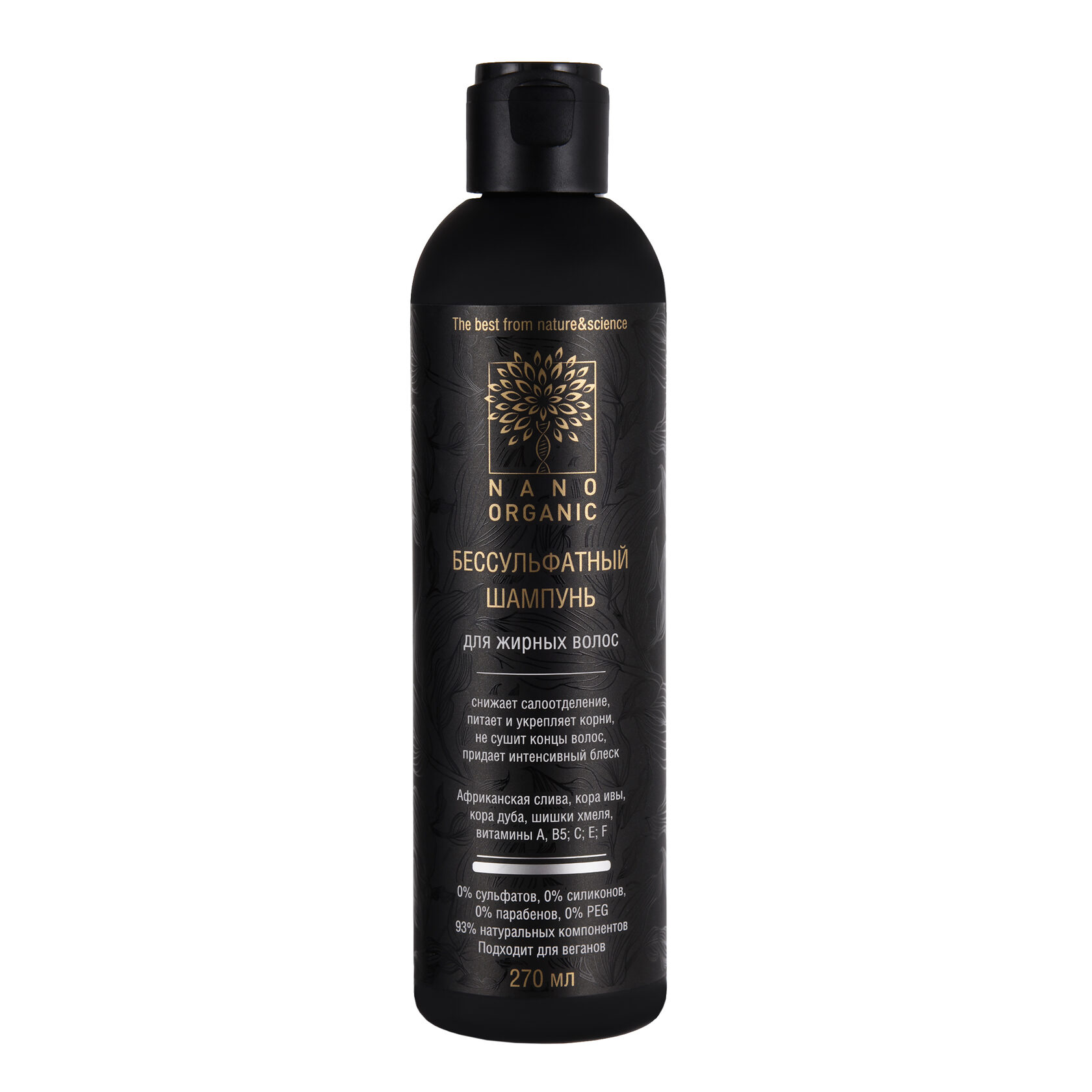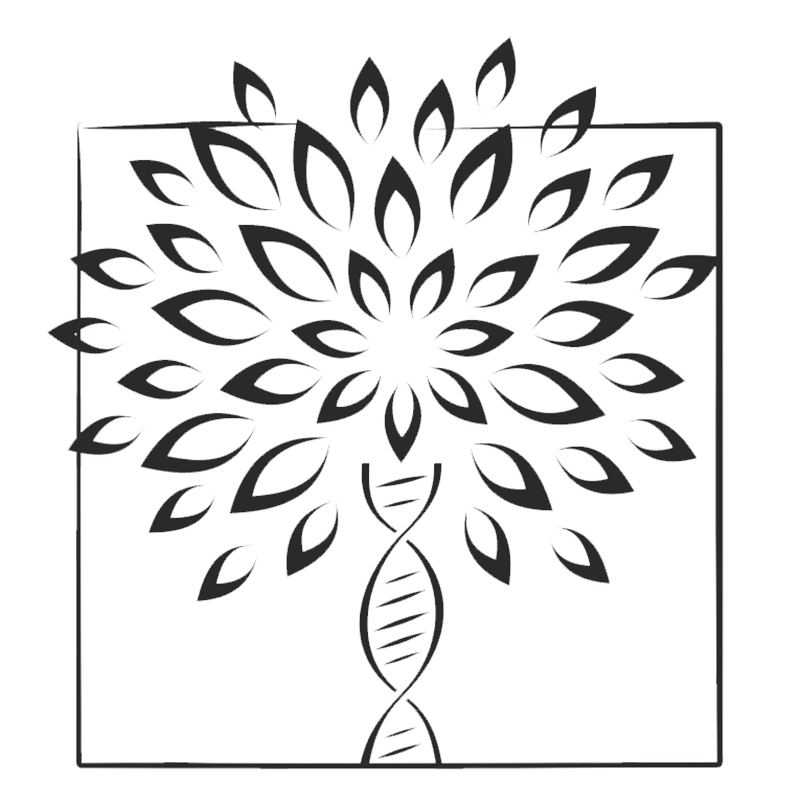
NanoOrganic
manager@naturcosmet.ru
+7 (915) 330-35-96
+7 (915) 330-35-96
Бессульфатный шампунь
Снижает салоотделение, питает и укрепляет корни. Придает блеск волосам.
Для жирных волос

Африканская слива
действует на главную причину жирности – блокирует фермент альфа-редуктазу.
Экстракты коры дуба и ивы
снижают активность сальных желез
Витамины A, B5, C, E, F
активно питают корни волос
Состав
manager@naturcosmet.ru
+7 (915) 330-35-96
+7 (915) 330-35-96
Состав
вода (Aqua); экстракт коры дуба (Quercus Robur Bark Extract); экстракт коры ивы (Salix Alba (Willow) Bark Extract); экстракт коры африканской сливы (Prunus Africana Bark Extract); экстракт хвоща полевого (Equisétum Arvénse Extract); экстракт шишек хмеля (Humulus Lupulus Extract); экстракт корня лопуха (Arctium Lappa Root Extract); омыленные кокосовое и касторовое масла (Potassium Cocoate, Potassium Ricinoleate); натуральный ПАВ из глюкозы и кокосового масла* (Decyl Glucoside); пребиотик (Sorbitol); провитамин B5 (Panthenol); витамин F (Linoleic Acid, Linolenic Acid); молочная кислота (Lactic Acid); натуральный витамин Е (Tocopherols Blend); лимонная кислота (Citric Acid); янтарная кислота (Succinic Acid); витамин С (Ascorbic Acid); натуральные консерванты: экстракт розмарина (Rosmarinus Officinalis (Rosemary) Leaf Extract), Nipaguard SCE* (Sorbitan Caprylate, Propanediol, Benzoic Acid); эфирные масла: клементин, мята перечная, шалфей (Essential Oils: Citrus Clementina Fruit, Mentha Piperita, Salvia Sclarea); витамин А (Retinol).
(*) разрешены европейскими системами экосертификации для органической косметики
(*) разрешены европейскими системами экосертификации для органической косметики
Разбор состава
Способ применения
Нанести шампунь на влажные волосы, помассировать, оставить на несколько секунд, смыть водой. При необходимости повторить.
Внимание! Бессульфатные шампуни пенятся хуже привычных, при этом отлично очищая волосы. Цвет шампуню придают растительные экстракты.
Внимание: возможна индивидуальная непереносимость компонентов.
Внимание! Бессульфатные шампуни пенятся хуже привычных, при этом отлично очищая волосы. Цвет шампуню придают растительные экстракты.
Внимание: возможна индивидуальная непереносимость компонентов.
Рекомендации
Наука
Исследования
Ниже можно посмотреть некоторые научные статьи, подтверждающие эффективность используемых активов. Слово "Источник" является активной ссылкой, перенаправляющей на первоисточник на платформе PubMed (общемировая платформа научных статей по медицине, биохимии, биологии) или других научных ресурсах.
Guiomar L. S. L. Evaluation of Humulus lupulus L. Therapeutic Properties for the Treatment of Skin Diseases: Determination of Antimicrobial, Cytotoxic, Anti-inflammatory and Antioxidant Potential of H. lupulus Extracts : дис. – Universidade da Beira Interior (Portugal), 2020.
Astray G. et al. Humulus lupulus L. as a natural source of functional biomolecules //Applied Sciences. – 2020. – Т. 10. – №. 15. – С. 5074.
Alonso-Esteban J. I. et al. Phenolic composition and antioxidant, antimicrobial and cytotoxic properties of hop (Humulus lupulus L.) Seeds //Industrial Crops and Products. – 2019. – Т. 134. – С. 154-159.
Мурашкин Н. Н. и др. Инновации в терапии атопического дерматита, осложненного вторичной инфекцией //Педиатрическая фармакология. – 2018. – Т. 15. – №. 4.
Yang M., Zhou M., Song L. A review of fatty acids influencing skin condition //Journal of cosmetic dermatology. – 2020. – Т. 19. – №. 12. – С. 3199-3204.
Spagnol C. M. et al. Ascorbic acid in cosmetic formulations: Stability, in vitro release, and permeation using a rapid, inexpensive, and simple method //Journal of Dispersion Science and Technology. – 2017. – Т. 38. – №. 6. – С. 901-908.
Ravetti S. et al. Ascorbic acid in skin health //Cosmetics. – 2019. – Т. 6. – №. 4. – С. 58.
Ehrlich M. et al. Improvement in the Appearance of Wrinkles with Topical Transforming Growth Factor β1 and l‐Ascorbic Acid //Dermatologic surgery. – 2006. – Т. 32. – №. 5. – С. 618-625.
Trommer H. et al. Role of ascorbic acid in stratum corneum lipid models exposed to UV irradiation //Pharmaceutical research. – 2002. – Т. 19. – №. 7. – С. 982-990.
Kim S., Lee T. G. Stabilization of l-ascorbic acid in cosmetic emulsions //Journal of industrial and engineering chemistry. – 2018. – Т. 57. – С. 193-198.
Raschke T. et al. Topical activity of ascorbic acid: from in vitro optimization to in vivo efficacy //Skin pharmacology and physiology. – 2004. – Т. 17. – №. 4. – С. 200-206.
Stettler H. et al. A new topical panthenol-containing emollient: Results from two randomized controlled studies assessing its skin moisturization and barrier restoration potential, and the effect on skin microflora
Journal of Dermatological Treatment. – 2017. – Т. 28. – №. 2. – С. 173-180.
Journal of Dermatological Treatment. – 2017. – Т. 28. – №. 2. – С. 173-180.
Bissett D. L. Common cosmeceuticals
Clinics in dermatology. – 2009. – Т. 27. – №. 5. – С. 435-445.
Clinics in dermatology. – 2009. – Т. 27. – №. 5. – С. 435-445.
Pavlačková J. et al. In vivo efficacy and properties of semisolid formulations containing panthenol
Journal of cosmetic dermatology. – 2019. – Т. 18. – №. 1. – С. 346-354.
Journal of cosmetic dermatology. – 2019. – Т. 18. – №. 1. – С. 346-354.
Yoshioka A. et al. Anti-oxidant effects of retinoids on inflammatory skin diseases //Archives of dermatological research. – 1986. – Т. 278. – №. 3. – С. 177-183.
Zasada M., Budzisz E. Retinoids: Active molecules influencing skin structure formation in cosmetic and dermatological treatments //Advances in Dermatology and Allergology/Postȩpy Dermatologii i Alergologii. – 2019. – Т. 36. – №. 4. – С. 392.
Słoczyńska K. et al. Skin metabolism established with the use of MetaSite for selected retinoids employed in topical and systemic treatment of various skin disorders and found in cosmeceuticals //Acta Biochimica Polonica. – 2015. – Т. 62. – №. 2.
Ramos-e-Silva M. et al. Anti-aging cosmetics: Facts and controversies //Clinics in dermatology. – 2013. – Т. 31. – №. 6. – С. 750-758.
Packer L., Valacchi G. Antioxidants and the response of skin to oxidative stress: vitamin E as a key indicator //Skin Pharmacology and Physiology. – 2002. – Т. 15. – №. 5. – С. 282-290.
Nachbar F., Korting H. C. The role of vitamin E in normal and damaged skin //Journal of Molecular Medicine. – 1995. – Т. 73. – №. 1. – С. 7-17.
Thiele J. J., Ekanayake-Mudiyanselage S. Vitamin E in human skin: organ-specific physiology and considerations for its use in dermatology //Molecular aspects of medicine. – 2007. – Т. 28. – №. 5-6. – С. 646-667.
Hubert J. et al. In vitro dermo-cosmetic evaluation of bark extracts from common temperate trees //Planta medica. – 2016. – Т. 82. – №. 15. – С. 1351-1358.
Tyśkiewicz K. et al. Characterization of bioactive compounds in the biomass of black locust, poplar and willow //Trees. – 2019. – Т. 33. – №. 5. – С. 1235-1263.
Piątczak E. et al. Identification and accumulation of phenolic compounds in the leaves and bark of Salix alba (L.) and their biological potential //Biomolecules. – 2020. – Т. 10. – №. 10. – С. 1391.
Bassino E., Gasparri F., Munaron L. Pleiotropic effects of white willow bark and 1, 2-decanediol on human adult keratinocytes //Skin pharmacology and physiology. – 2018. – Т. 31. – №. 1. – С. 10-18.
